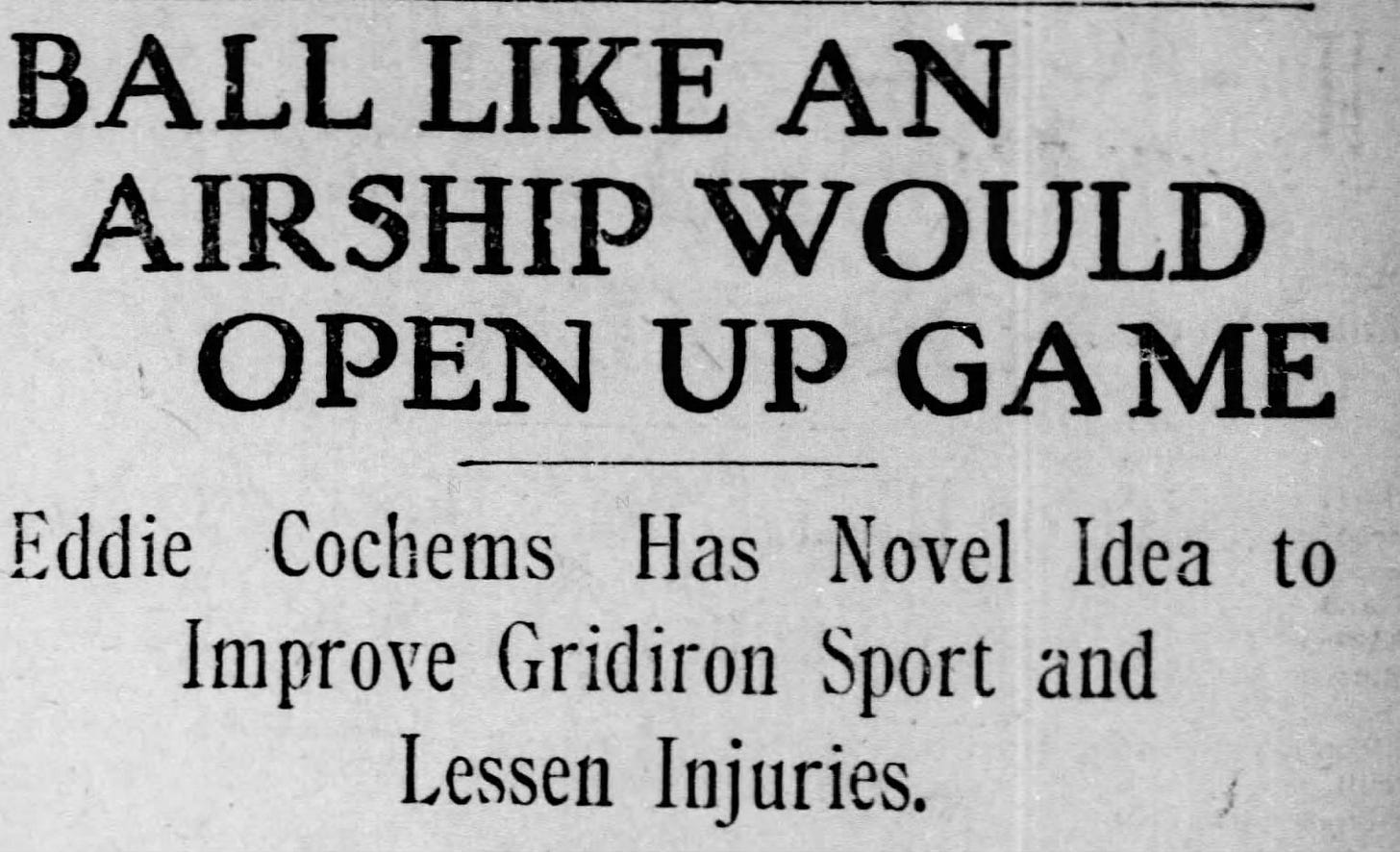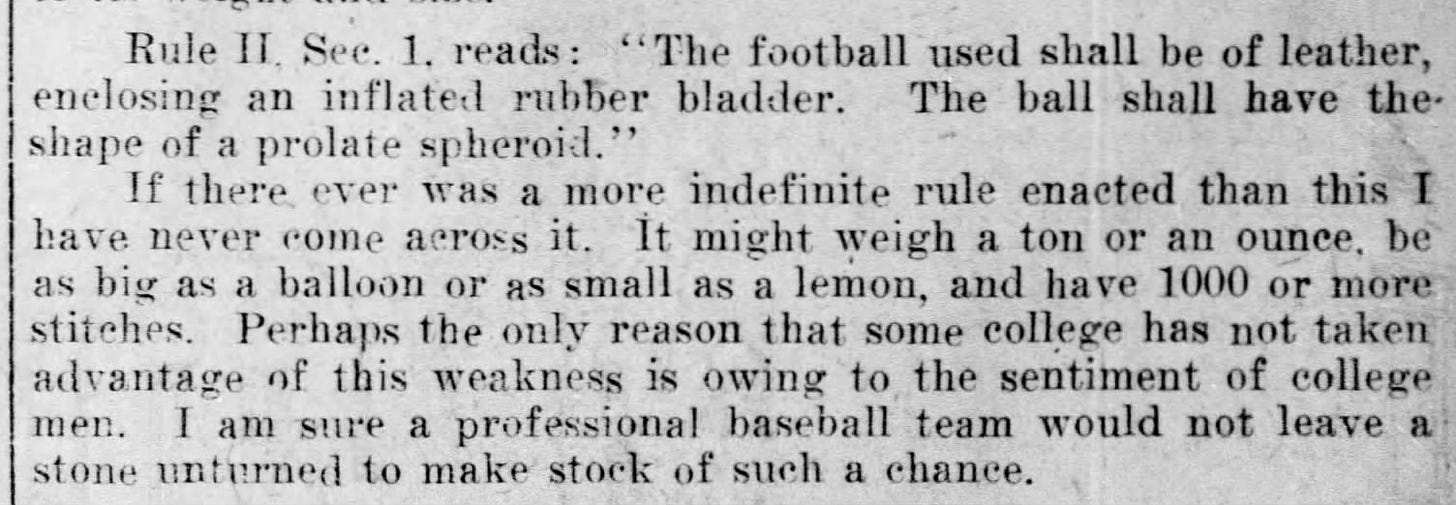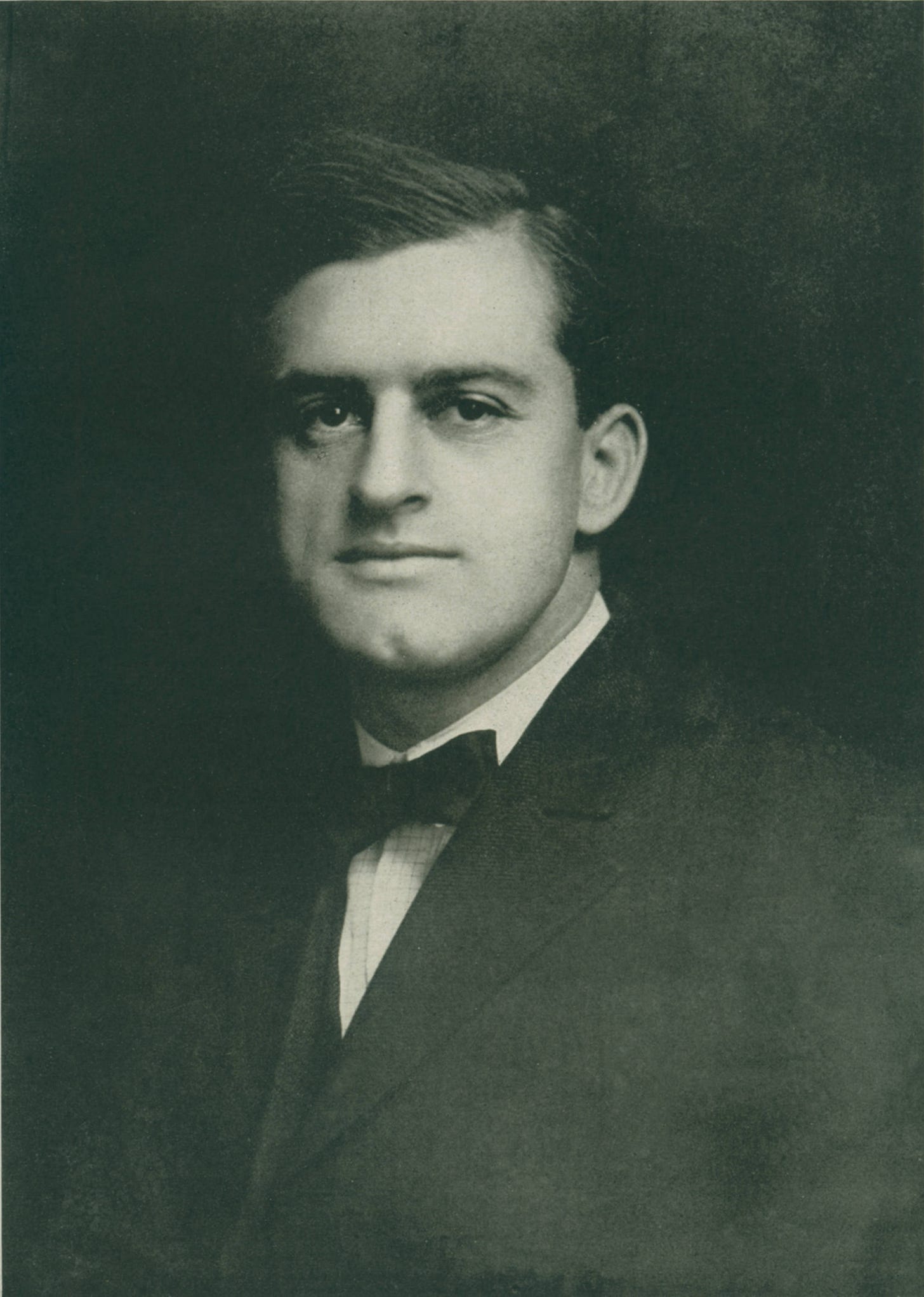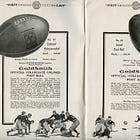Today's Tidbit... When Football Had Bigger Balls
I published A History of the Football last year and will soon publish When Football Came To Pass. The new book covers the first decade of the forward pass, focusing on how coaches and players figured out how to throw the ball and design plays when the passing rules were highly restrictive and changed regularly.
Teams found at least nine ways to throw the forward pass in 1906, including three techniques and grips for throwing the overhand spiral. The ball in 1906 was larger, with less pebbled leather, and thinner, more flexible laces. The ball's size did not affect the Toss and Fling families of throwing techniques, but it made throwing the spiral more difficult, partly explaining why there were three overhand spiral techniques.
While several coaches and teams used the overhand spiral in 1906, no one used it as often or as successfully as St. Louis U, coached by Eddie Cochems. From the beginning, Cochems argued for changing the size of the ball. He thought the failure to do so resulted from the Rules Committee primarily being comprised of Easterners, whose football teams threw the ball using goofy, non-spiral techniques, when they threw the ball at all.
Shortly after the 1906 season, Cochems argued for using a smaller ball because few players who did not have large hands could throw the spiral effectively.

By 1907, Cochems wanted a slimmer ball with extra lacing and suggested increasing the ball's weight.

His 1907 argument also fell on deaf ears because many people wanted to eliminate the forward pass, and, if they succeeded in their quest, there would be no need to change the ball's dimensions.
Cochems left St. Louis U after the 1908 season and began coaching at Barnes Medical School in St. Louis, where he continued advocating for rule changes to enhance the forward pass and safety. Among his suggested changes was to change the ball's shape, making it an inch longer and narrower to resemble a dirigible. He also called for allowing more than one forward pass per down.

Cochems pointed out that football at the time did not have a rule specifying the football's size or shape, other than saying it should have a rubber bladder covered in leather and be a prolate spheroid in shape. Under the letter of the law, the home team could have provided a ball of any size or weight at the start of a game. (Until 1903, the rules specified that teams use the Spalding J5, but other manufacturers did not like that rule, so it went away.)

Cochems left coaching before the forward pass really took off, and the football world failed to take Cochems' advice until the late 1920s, when passing-oriented teams began using "bootleg" game balls. Bootleg balls were thinner than regulation. If the referee did not measure and exclude the ball before the game, the teams played with the slimmer ball.
The linked article below describes in more detail how feedback from coaches got the NCAA to reduce the ball's size in 1929 and 1934. The NFL adopted the NCAA-specced football in 1935 and has not changed the ball's dimensions since then. The NCAA made a minor change in 1982, but otherwise, footballs have been the same size for the last 90 years.
Of course, football might have reached that size before 1910 if they had listened to Eddie Cochems, but some prefer bigger balls. CFL fans once bragged about the size of their balls, even though they were minimally different from the NFL's, and since 2024, CFL balls have had the same specifications as NFL balls.
Football Archaeology is reader-supported. Click here to donate a couple of bucks, buy one of my books, or otherwise support the site.






Great history. My son the quarterback was thankful for a more throwable ball!